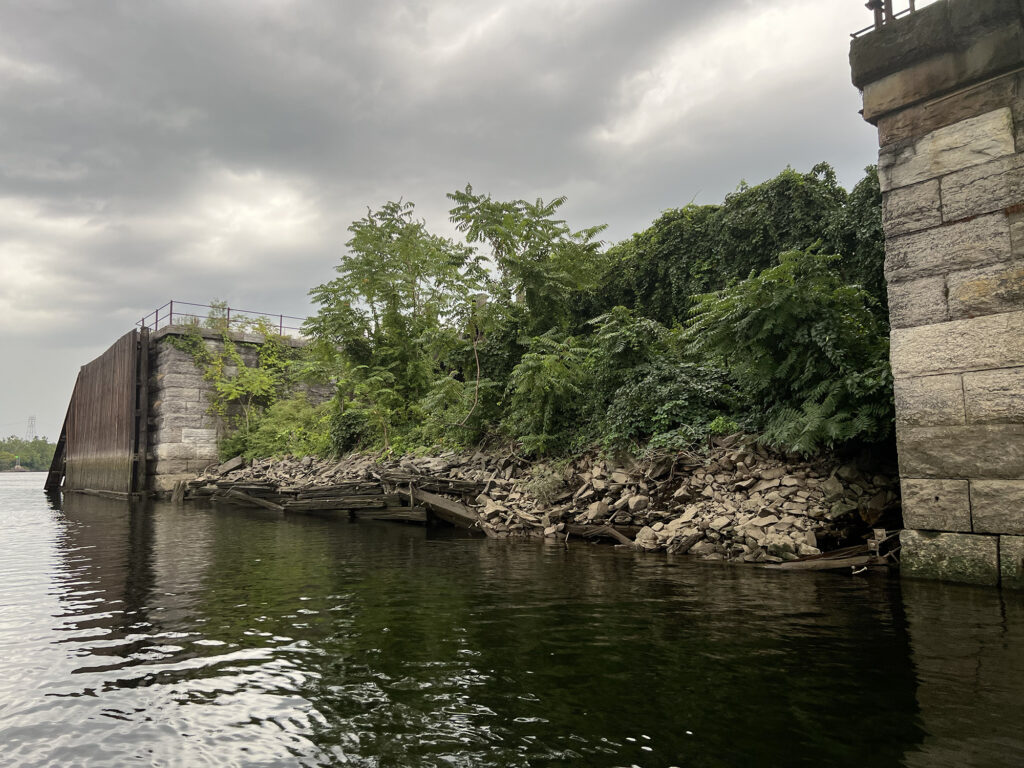The seventh week of Source to Estuary found us out on the river on a solar pontoon boat! We joined Scott Kellogg of the Radix Ecological Sustainability Center for a trip along the Albany shoreline of the Hudson River, where we learned about his experiments with floating islands as a means of improving water quality and broadening access to the waterfront. Youth fellow Muzzamil Moate interviewed Scott for our audio series.
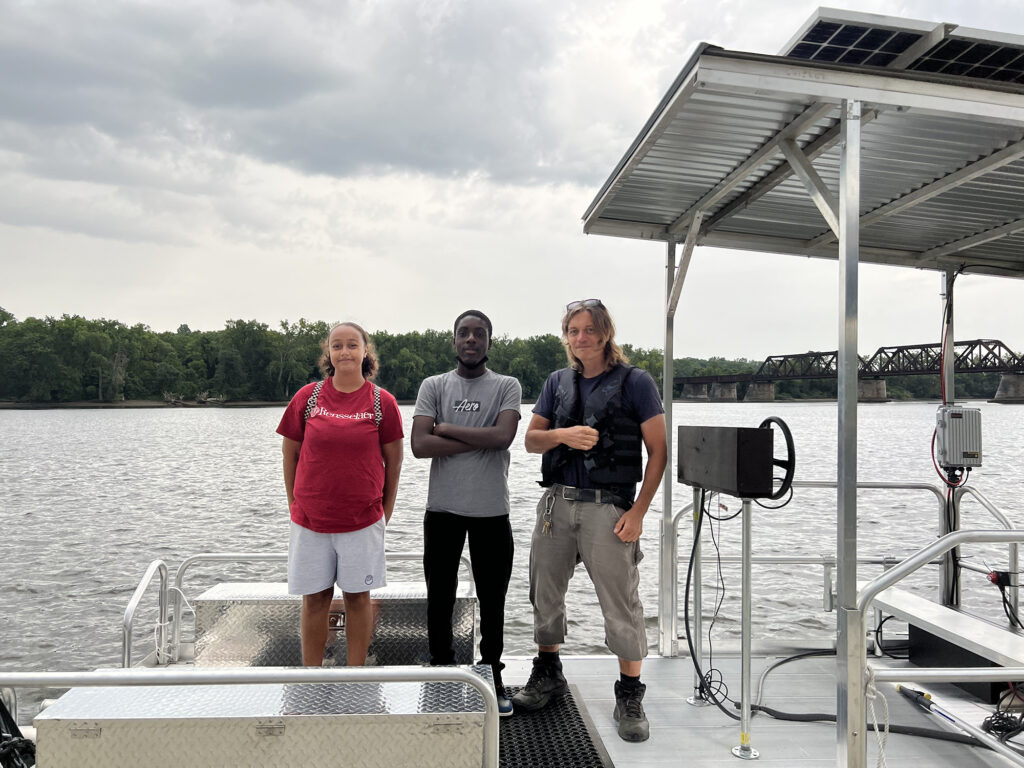
We started the trip at the boat launch at Corning Preserve at low tide, with the 787 looming nearby and a gray cloud cover gathering. Scott told us about how a grant from the DEC Hudson River Estuary Program allowed Radix to build the pontoon boat, which has a roof covered in solar panels, and an electric motor powered by two large batteries that store solar energy. The purpose of the boat is two-fold: to allow access to install and monitor the floating islands Radix constructs and launches into the Hudson, and to bring the public, especially the youth of Albany, out on the river to experience it directly and see the islands in situ. As we boarded, youth fellows Nique and Muzzamil explained how Water Justice Lab tests river water for sewage contamination, and how we’ve been looking at other ecological indicators of water quality, like macroinvertebrate populations, as part of Source to Estuary.
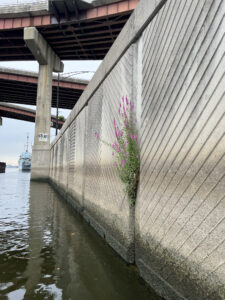
The boat trip took us south from Corning Preserve under the Amtrak Broadway Bridge and the Dunn Memorial Bridge, and past the USS Slater. Along most of this route, the edge of the Hudson is a concrete wall that extends at least thirty feet above the shoreline. We were intrigued to see plants, moss, and algae finding a home in some fissures and cracks in the wall. Scott noted that the way that river has been dredged, narrowed and straightened for large ship traffic, mostly to the Port of Albany, has dramatically reduced edge habitat, impacting river health and biodiversity, a point that echoed some of the conversation we had during our trip to Papscannee Island during our week 5 field trip. We also saw several combined sewer overflow points, large pipes where sewage dumps into the river during heavy rains.
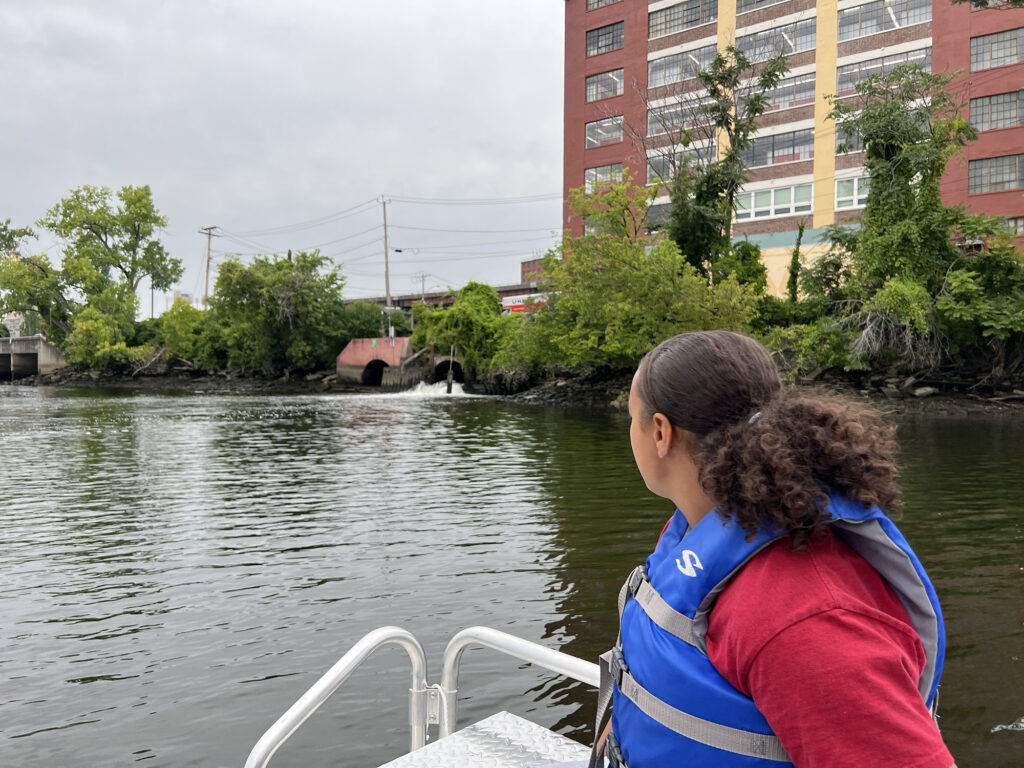
As the Port of Albany came into clearer view, the concrete wall gave way to brick, stone, and wooden embankments. We traveled along a large piece of city-owned land that serves as a parking lot for moving trucks, and wondered what it would be like to use that land differently. We also passed by the outflow point known as the “Big C” where wastewater–usually treated, sometimes combined with raw sewage–empties back into the Hudson, and thought about the outflow point at the Rensselaer County Wastewater Treatment plant we saw during our week 6 field trip.
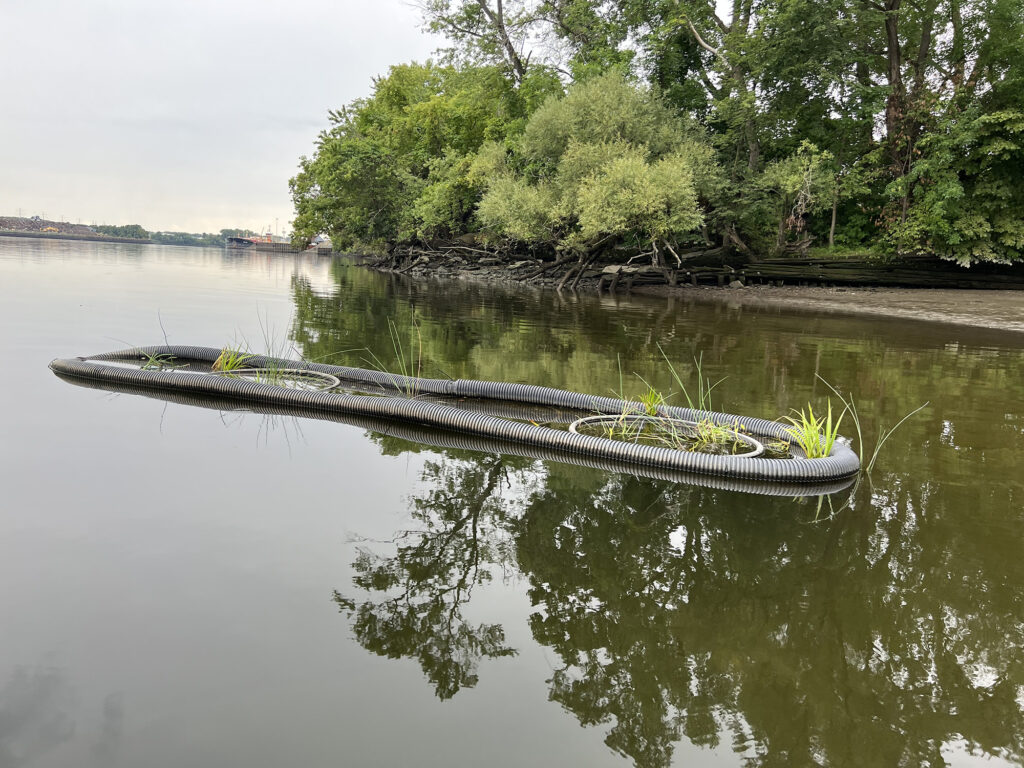
After about thirty minutes on the water, we arrived at Island Creek Park, the only riverfront access in the Albany’s South End. Like North Central Troy, the South End is a historically red-lined neighborhood, with low access to quality greenspace and a history of city and state disinvestment and environmental racism, rendering communities more vulnerable to the impacts of climate change, from flooding to heat to air pollution. In addition to planting trees and building soil on land around the South End, Radix has experimented with installing floating islands built from compostable and reusable materials that can support aquatic plants and animals. During our visit, several of these islands were in the water at Island Creek Park. Scott explained how these little floating habitats provide niches for organisms who can’t survive on the exposed concrete walls and steep banks that line the river, and in turn the organisms help break down and process the excess nutrients released into the river during combined sewage overflow events.
After inspecting the islands, we turned north and returned to Corning Preserve under darkening clouds. A few drops of rain fell as we scouted the edge of an island under the Broadway Amtrak Bridge, and the wind picked up churning up waves as youth fellows did a quick interview with Scott back at the dock. Just as we headed for the car to return to the lab, the clouds opened up and a massive rainstorm filled the streets and gutters, no doubt overwhelming the storm drains and creating a combined sewer overflow.
